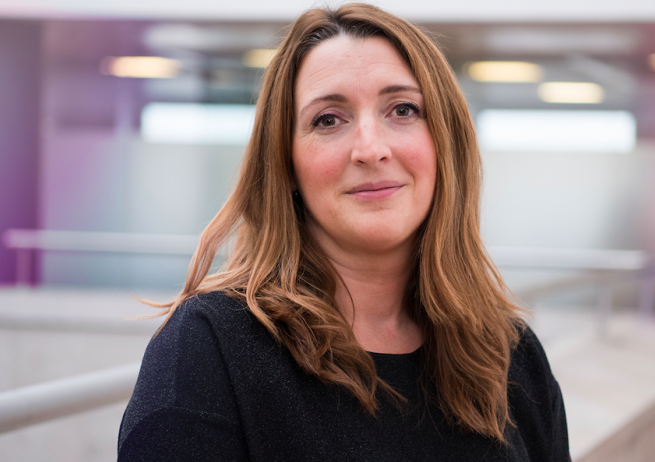In the first of two interviews, Nancy Lengthorn talks about her role as a diversity and inclusion professional at MediaCom UK and provides advice on adopting inclusive practices in the workplace.
Knowing that her work as a diversity and inclusion professional “would annoy less liberal thinkers” makes Nancy Lengthorn happy.
Not that upsetting anyone is top of her to do list. Far from it. Her number one priority is making the workplace inclusive for current and future employees, whatever their background.
“I think it is incredibly important and I’m struggling in the current political climate, as a lot of people are,” she says. “The country – what is happening at the moment – is not really where I want to live and where I want my children to grow up. If I can reset things a little bit, then that makes me happy.”
Enabling future talent
Nancy is Head of Diversity, Inclusion and Future Talent at MediaCom UK, the country’s largest media agency. It’s a role that she’s carved out for herself over the last seven or eight years. Originally, she was part of the media side of the business, running her own team. Then, after having the first two of her four children, she decided media was no longer for her and she would prefer a more people-focused role.
Fortunately, this didn’t mean leaving the agency. Instead she was asked to set up the apprentice scheme. “I absolutely loved it,” she says. “I was given the flexibility and freedom to play with the tradition and routines and implement what I thought was fair and right.”
The end of entry level CVs
This enabled her to bring diversity into the recruitment process. A novel step involved taking CVs off the table for entry-level staff. The idea being that young people in their early 20s are unlikely to have much industry experience. Interviews involve a variety of tasks to assess presenting and debating skills potential and how candidates relate to people.
The diversity and inclusion side of the role increased and, when Josh Krichefski became CEO, he gave Nancy his backing to do more. She is now steering a raft of initiatives, including mental health ally and reverse mentoring schemes.
“I’ve had to do a lot of my own learning,” she explains. “I go to lots of things, read lots of things. So, it’s just happened organically, and I’ve been very lucky to work somewhere that allowed me to do something that I really cared about.”
Understand who is in the building
Her approach at MediaCom UK is to first understand who is in the building rather than simply ticking boxes.
“For me, it’s about getting regular temperature checks to understand what people’s experiences actually are,” Nancy reveals. “And then, when we fully understand that, then it’s about bringing people together, creating initiatives that are bespoke for the people that need support.
“What we don’t want to say to people is, ‘this is the right way to think and how you think is wrong’ because people dig in their heels, which makes it worse. We focus on telling stories and that hooks into what we do as a job.”
Create an authentic voice
Nancy admits that being in the creative industry makes diversity and inclusion much easier to implement, whereas other sectors might struggle to achieve it. But that’s no excuse not to try.
Her advice is: “You’ve got to find the thing that is authentic for your company and do that. People are having exactly the same issues as those in this building.”
She recommends reading anything and everything. Not just the official books but those that fall into the popular category. For example, titles such as ‘Why I’m no longer talking to white people about race’ were helpful. Linkedin is another good source of information and for finding out key names in the sector.







